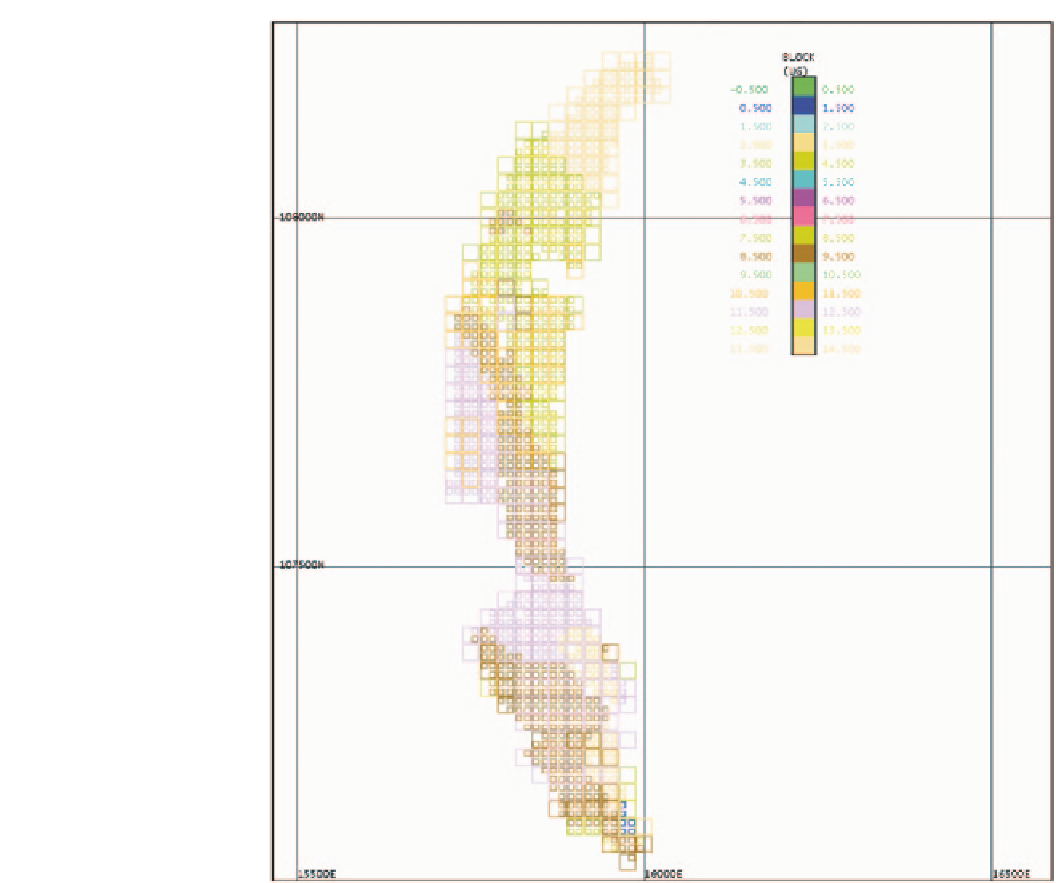Geoscience Reference
In-Depth Information
Fig. 13.1
TCu Estimation
Domains for the long-term and
quarterly models, Bench 2845,
Escondida Mine
Note how the QT model monthly averages approximate
much better the corresponding grades predicted by the refer-
ence model for most months. Although the reference model
is only another model (based on a single conditional simula-
tion), by construction represents well the production grades
from previous periods. The QT model, based partly on blast
holes, is also expected to be a better predictor of production
grades.
to be mined (short-term mine planning) as usually the com-
plete stope is classified as either ore or waste. Any mistakes
that may occur at this decision point are not only irreversible,
but also cannot be compensated by other types of errors, as is
sometimes the case with resource estimation.
Grade control is key to the mine's profitability because
the resource is finite, and the time of selection is the last op-
portunity that the mining company has to realize its expected
revenue. It is also used to maximize resource recovery, or
more frequently in the Western world to optimize recovered
dollar value. Also, the processing plant usually works better
when a constant grade is fed to it. Sometimes stockpiling is
necessary to avoid fluctuating grades. There are four areas
of interest in grade control: classification, cutoff grade, loss
functions for grade control, and the consideration of non-free
selection.
Classification is the process of deciding where to send
the mined out material. A block is selected as ore if the rev-
enue from processing it as ore exceeds the cost of mining
it as waste. As discussed in Chap. 7, the calculation of cut-
13.3
Selection of Ore and Waste
The process of ore/waste selection at a mine, or grade con-
trol, whether underground or open pit, is the most geological
important decision at the mine. The final, irreversible deci-
sion as to what is ore and what is waste is made. In open pit
mines, the decision is generally made on a daily basis, and
commonly based on sampled blast hole information. In the
case of underground mines, the process may be based on in-
fill drilling and completed at the time of defining the stopes

